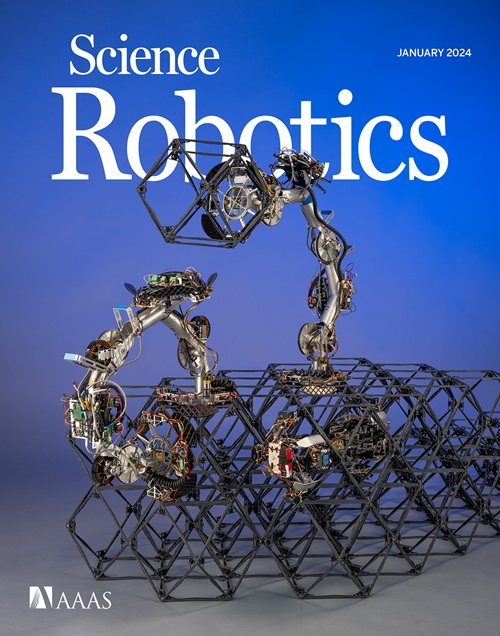欧罗巴着陆器任务概念的自主表面采样
IF 27.5
1区 计算机科学
Q1 ROBOTICS
引用次数: 0
摘要
木卫二是木星的卫星,是太空探索的优先目标,因为它有可能孕育生命。在过去的十年里,一个收集和分析样本以寻找生命迹象的着陆任务概念得到了发展。在操作上,这种任务的一个关键挑战是着陆器空间尺度上的表面环境不为人所知,这就要求这种任务能够在各种表面条件下获取样本。此外,木卫二绕木星运行85.2小时的轨道将直接与地球的通信限制在轨道周期的一半。最后,功率限制和带电粒子辐射可能会将这种任务的寿命限制在几个月。本文描述了开发采样硬件和自主软件的努力,以实现这样的木卫二表面任务。这项历时多年的努力利用了多个模拟和试验台场地的开发,最终在美国阿拉斯加Matanuska冰川的现场活动中达到高潮,在那里,一个跨学科团队展示了具有代表性的着陆器硬件的自主端到端采样活动。本文章由计算机程序翻译,如有差异,请以英文原文为准。
Autonomous surface sampling for the Europa Lander mission concept
Europa, a moon of Jupiter, is a high-priority target for space exploration because of its potential to harbor life. A landed mission concept to collect and analyze samples for signs of life was developed over the past decade. Operationally, a critical challenge for such a mission is that the surface environment at the spatial scale of the lander is not well known, requiring that such a mission be capable of acquiring samples in a wide range of surface conditions. Furthermore, the 85.2-hour orbit of Europa around Jupiter limits direct-to-Earth communications to half the orbital period. Last, power constraints and charged-particle irradiation could limit the lifetime of such a mission to several months. This article describes an effort to develop sampling hardware and autonomous software to enable such a Europa surface mission. This multiyear effort leveraged development across multiple simulation and test-bed venues, culminating in a field campaign on the Matanuska Glacier, Alaska, USA, where a cross-disciplinary team demonstrated autonomous end-to-end sampling activities with representative lander hardware.
求助全文
通过发布文献求助,成功后即可免费获取论文全文。
去求助
来源期刊

Science Robotics
Mathematics-Control and Optimization
CiteScore
30.60
自引率
2.80%
发文量
83
期刊介绍:
Science Robotics publishes original, peer-reviewed, science- or engineering-based research articles that advance the field of robotics. The journal also features editor-commissioned Reviews. An international team of academic editors holds Science Robotics articles to the same high-quality standard that is the hallmark of the Science family of journals.
Sub-topics include: actuators, advanced materials, artificial Intelligence, autonomous vehicles, bio-inspired design, exoskeletons, fabrication, field robotics, human-robot interaction, humanoids, industrial robotics, kinematics, machine learning, material science, medical technology, motion planning and control, micro- and nano-robotics, multi-robot control, sensors, service robotics, social and ethical issues, soft robotics, and space, planetary and undersea exploration.
 求助内容:
求助内容: 应助结果提醒方式:
应助结果提醒方式:


